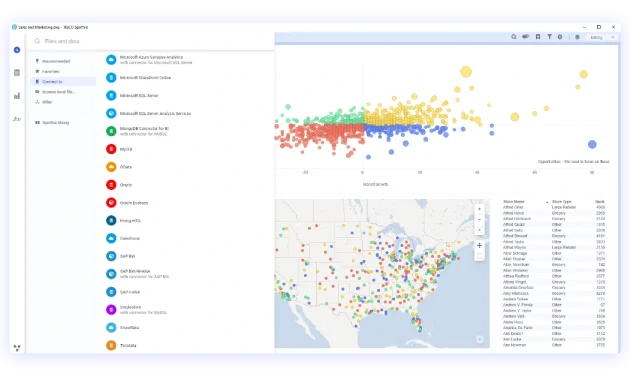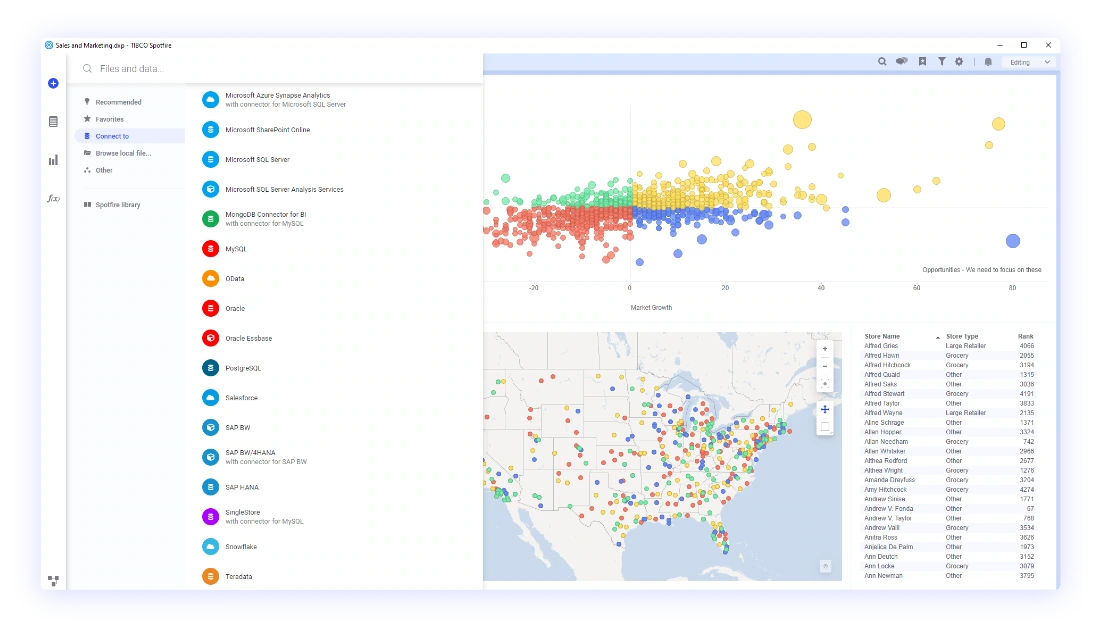
The Best Business Intelligence Tools for VR: Transforming Data into Immersive Insights
The convergence of Business Intelligence (BI) and Virtual Reality (VR) is rapidly reshaping how businesses analyze data and make decisions. Imagine stepping inside your data, exploring complex datasets with intuitive, interactive visualizations. This is the promise of VR-powered BI, offering a level of understanding and engagement previously unattainable. This article delves into the best business intelligence tools for VR, exploring their capabilities, benefits, and the future of data analysis in an immersive world.
The core concept revolves around transforming abstract data points into tangible, navigable environments. Instead of staring at spreadsheets or static dashboards, users can now interact with their data in a three-dimensional space. This enhanced immersion allows for a deeper understanding of trends, patterns, and anomalies, leading to more informed and effective decision-making. This shift is particularly valuable in complex industries, such as finance, healthcare, and manufacturing, where data visualization is crucial.
Why VR for Business Intelligence? The Benefits Explained
The adoption of VR in business intelligence is driven by several key advantages:
- Enhanced Data Visualization: VR allows for the creation of complex, multi-dimensional visualizations that are difficult to achieve on traditional 2D screens. This includes interactive charts, graphs, and models that users can manipulate and explore.
- Improved Data Comprehension: Immersive environments make it easier to identify patterns, outliers, and relationships within large datasets. This leads to a more comprehensive understanding of the data and its implications.
- Increased Collaboration: VR enables teams to collaborate on data analysis in a shared virtual space, fostering better communication and teamwork.
- Faster Decision-Making: By providing a more intuitive and engaging way to interact with data, VR can accelerate the decision-making process.
- Reduced Cognitive Load: VR can simplify complex data, reducing the mental effort required to understand it.
These benefits translate into significant improvements in operational efficiency, strategic planning, and overall business performance. Businesses leveraging the best business intelligence tools for VR are better positioned to gain a competitive edge.
Top Business Intelligence Tools for VR: A Comparative Overview
Several BI tools are leading the charge in integrating VR capabilities. Here’s a look at some of the most prominent:
Tableau VR
Tableau is a well-established leader in the BI space. They offer VR integration through partnerships and third-party extensions. While not a native VR platform, Tableau’s ability to connect to various data sources makes it a versatile option. Users can visualize Tableau dashboards within VR environments, enabling immersive data exploration. This is a good starting point for those already invested in the Tableau ecosystem. The focus is on making existing data accessible in VR.
Microsoft Power BI with VR Integration
Microsoft Power BI also offers VR integration, primarily through partner solutions and custom development. Power BI’s robust features and widespread adoption make it a strong contender. Users can create and view Power BI reports and dashboards within VR environments. This empowers users to analyze data in a more engaging way. Microsoft’s cloud-based infrastructure supports seamless data access and collaboration. This allows for access to real-time data visualizations within a VR setting.
VR Data Visualization Platforms
Several platforms are specifically designed for VR data visualization, offering native support and advanced features. These platforms often provide more immersive and interactive experiences compared to tools that simply integrate VR capabilities. These platforms are built from the ground up for VR, maximizing immersion.
Some examples include:
- Immersed: Immersed is a virtual reality platform that allows users to create immersive workspaces. While not strictly a BI tool, it can be used to create virtual environments for data visualization.
- Others: Several other specialized platforms are emerging, focusing on creating interactive VR experiences for data analysis. These platforms often cater to specific industries or use cases.
Key Features to Look for in VR BI Tools
When evaluating the best business intelligence tools for VR, consider these features:
- Data Connectivity: The tool should seamlessly connect to your existing data sources, including databases, cloud platforms, and spreadsheets.
- Visualization Capabilities: Look for a wide range of interactive charts, graphs, and 3D models to represent your data effectively.
- User Interface (UI) and User Experience (UX): The VR interface should be intuitive and easy to navigate, allowing users to interact with data effortlessly.
- Collaboration Features: Support for multi-user sessions and real-time collaboration is crucial for team-based data analysis.
- Performance and Scalability: The tool should handle large datasets and complex visualizations without performance issues.
- Integration with existing BI infrastructure: Seamless integration simplifies deployment and adoption.
Selecting the right tool depends on your specific needs and the nature of your data. Choosing the right tool is critical for success.
Use Cases: How Businesses are Leveraging VR BI
VR is transforming data analysis across various industries. Here are some examples:
- Manufacturing: Engineers can use VR to visualize product designs, analyze production processes, and identify potential problems before they occur.
- Finance: Financial analysts can explore market trends, analyze investment portfolios, and identify risks in a more intuitive way.
- Healthcare: Doctors can visualize patient data, such as MRI scans and 3D models of organs, to improve diagnosis and treatment planning.
- Retail: Retailers can analyze sales data, understand customer behavior, and optimize store layouts in a virtual environment.
- Real Estate: Real estate developers can showcase properties and allow potential buyers to experience them in a virtual setting.
These examples highlight the versatility of VR in business intelligence, demonstrating its potential to enhance decision-making across various sectors.
Challenges and Considerations
While the potential of VR in BI is significant, there are also challenges to consider:
- Cost: VR hardware can be expensive, and the development of VR applications requires specialized skills.
- Adoption: Some users may experience discomfort or motion sickness in VR environments, which can hinder adoption.
- Data Security: Ensuring the security of sensitive data within VR environments is crucial.
- Technical Expertise: Developing and deploying VR BI solutions may require specialized technical expertise.
Despite these challenges, the benefits often outweigh the costs. Addressing these issues is crucial for successful implementation.
The Future of VR in Business Intelligence
The future of VR in business intelligence is bright. We can expect to see:
- Increased Adoption: As VR technology becomes more affordable and user-friendly, adoption rates will continue to rise.
- More Sophisticated Tools: BI tools will become more advanced, offering more immersive and interactive experiences.
- Integration with Artificial Intelligence (AI): AI will play a greater role in analyzing data within VR environments, providing insights and recommendations.
- Wider Range of Applications: VR will be used in a wider range of industries and use cases.
The best business intelligence tools for VR are poised to transform how businesses interact with data. This shift promises to revolutionize data analysis.
Conclusion: Embracing the Immersive Future of Data
VR is not just a novelty; it’s a powerful tool for transforming data into actionable insights. The best business intelligence tools for VR offer a new dimension of data analysis, enabling businesses to make faster, more informed decisions. By embracing this technology, businesses can unlock new levels of understanding, collaboration, and efficiency. As VR technology evolves, its impact on business intelligence will only continue to grow. The future of data analysis is undoubtedly immersive. The best business intelligence tools for VR will be essential for success.
The journey into VR BI is an exciting one. The potential for innovation is vast. Exploring the best business intelligence tools for VR is an investment in the future. Consider this information when choosing your BI solution.
[See also: Related Article Titles]

